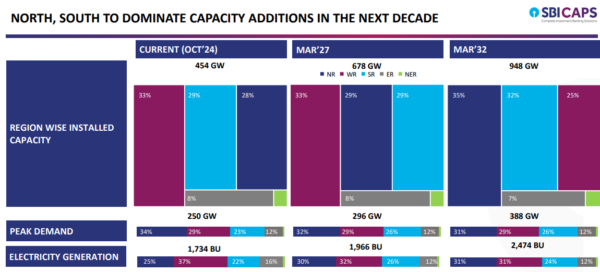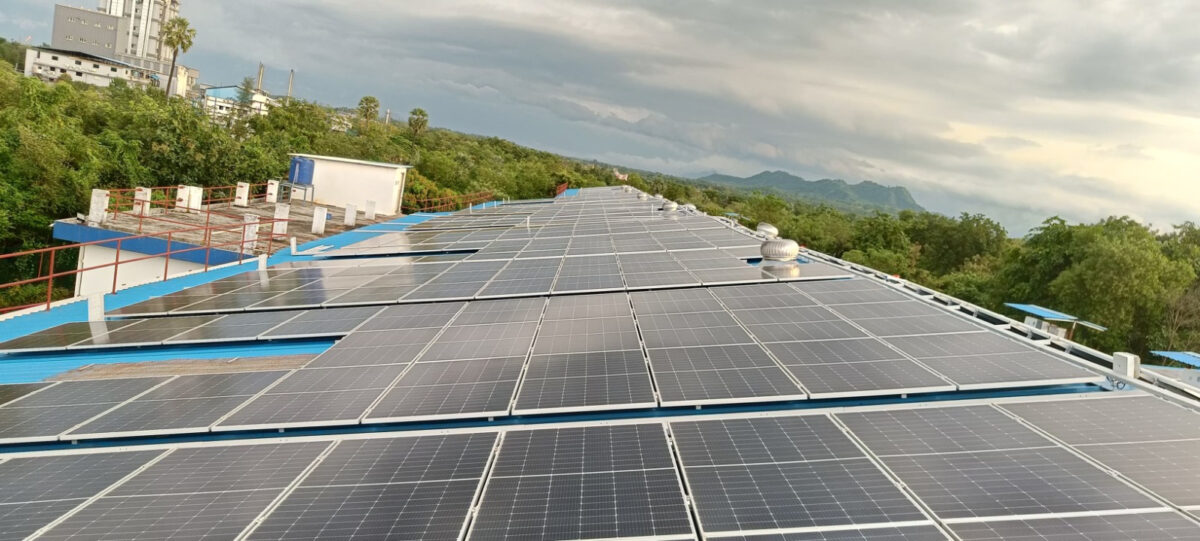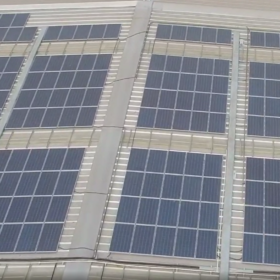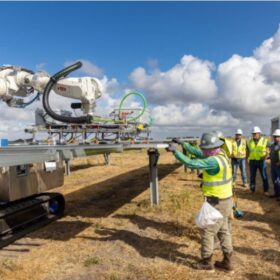India installed 30 GW of new power generation capacity in the twelve months ending Oct. 2024, taking the cumulative installations to 454 GW. Over 75% (22.5 GW) of this 30 GW addition was from renewable energy source, with solar alone forming 20 GW, says a new report by SBICAPS.
Along with solar, wind additions surged and energy storage systems saw a meteoric rise owing to increase in round-the-clock (RTC), firm and dispatch-able renewable energy (FDRE), and wind-solar hybrid (WSH) tenders. In fact, a third of RE tenders in 8M FY 2025 had a storage requirement (compared to 23% in FY 2024 and 5% in FY 2020).
A strong pipeline exists, and SBICAPS expects cumulative 50 GW of solar and wind additions in FY 2025 and FY 2026.
The report says north and south will dominate capacity additions in the next decade and will overtake the western region in installed power capacity by March 2032 with ample solar installations in northern region (particularly solar-rich Rajasthan and Ladakh) and South (in the windy coastal areas of Tamil Nadu, Karnataka, and Andhra Pradesh).

“Western region’s share in the installed power capacity will dip from 33% now to 25% by March 2032. This is even as it remains an important consumer of energy and a secondary driver of the national peak,” adds the report.
The report states that the gap between installed power capacity and generation is set to grow in the western region by March 2032, with deficits in the eastern and north eastern as well. This necessitates better transmission infrastructure to conduct power from the northern region and southern region to these regions. Further, since several renewable power hubs lie in remote deserts which do not have much existing evacuation infrastructure, significant greenfield expansions are necessary.
The report state that the pace of annual additions of the transmission network needs to be doubled in the medium term to achieve effective integration of renewable capacities. “Of the 114,687 ckm of transmission lines and 776 GVA of substations to be added between April 2022-March 2027, about 28% of the former and 20% of the latter have been commissioned as of Oct. 24. Achieving the remainder by March 2027 would entail a doubling of annual addition pace for both these items – a formidable task given only half such projects have even entered the construction phase,” it stated.
This content is protected by copyright and may not be reused. If you want to cooperate with us and would like to reuse some of our content, please contact: editors@pv-magazine.com.









2 comments
By submitting this form you agree to pv magazine using your data for the purposes of publishing your comment.
Your personal data will only be disclosed or otherwise transmitted to third parties for the purposes of spam filtering or if this is necessary for technical maintenance of the website. Any other transfer to third parties will not take place unless this is justified on the basis of applicable data protection regulations or if pv magazine is legally obliged to do so.
You may revoke this consent at any time with effect for the future, in which case your personal data will be deleted immediately. Otherwise, your data will be deleted if pv magazine has processed your request or the purpose of data storage is fulfilled.
Further information on data privacy can be found in our Data Protection Policy.